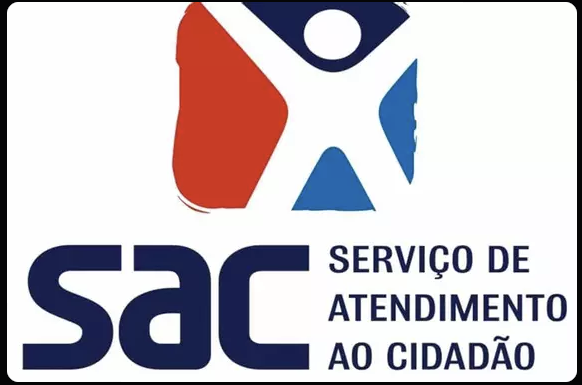Table of Content
ToggleIntroduction
In a country as geographically expansive and culturally diverse as Brazil, ensuring equitable access to governmental services for every citizen is no small endeavor. Every nation’s bureaucracy, with its intricate web of regulations and procedures, can be a maze for its citizens. In Brazil, this challenge is amplified by its sheer size and diversity. Yet, it’s this very challenge that the Sistema de Atendimento ao Cidadão (SAC), or the Citizen Service System, was designed to tackle. Rooted in a rich history and an ambitious vision, the SAC is Brazil’s ambitious answer to streamlining bureaucracy, ensuring that every Brazilian, irrespective of their location or background, has access to essential governmental services with ease. This comprehensive guide aims to shed light on the intricate machinery of SAC, its inception, growth, the vast array of services it offers, and its transformative impact on Brazil’s public service landscape.
Historical Backdrop
The genesis of SAC in the 1990s was spurred by a growing realization within the Brazilian government: the old systems were no longer viable. The bureaucratic apparatus was labyrinthine, often causing citizens to spend days, if not weeks, trying to access basic services.
A step-by-step chronology of SAC’s evolution provides a clearer understanding:
- 1992: Initial discussions and proposals highlighted the need for a centralized system.
- 1995: The establishment of the first brick-and-mortar SAC service center.
- 2000: With the digital revolution in full swing, SAC began transitioning online, leading the way in e-governance in South America.
- 2010: A landmark year where the initiative made concerted efforts to expand its reach into Brazil’s vast interiors, ensuring the rural populace wasn’t left behind.
- 2020: Leveraging advanced technology, SAC incorporated AI-driven services, chatbots, and a more user-centric digital interface, aiming for seamless citizen interactions.
Organizational Structure of SAC
The SAC’s organizational structure is a masterclass in balancing centralized oversight with decentralized execution. Designed to provide standardized services across Brazil while accommodating regional differences, it’s a multi-layered, dynamic entity.
[Centralized SAC Hub]
/ | \ \ \ \
[Transport] [Health] [Finance] [Education] [Housing] [Utilities]
| | | | | |
[Bus & Rail] [Hospitals] [Taxes] [School Systems] [Mortgages] [Water & Electric]Centralized SAC Hub
At the very top sits the Centralized SAC Hub. This body sets the overarching policies, standard procedures, and monitors the performance of regional centers. It’s here that the most significant decisions regarding the future direction of SAC, its expansions, and integrations, are made.
Strategy and Policy Division: Responsible for the long-term vision, they draft policy changes and decide on new service integrations.
Performance Monitoring Division: They ensure that every regional and local SAC center meets the required standards and adheres to the set guidelines.
Technology and Innovation Division: Focuses on the technological aspect of SAC, ensuring the systems are up-to-date, secure, and user-friendly.
Regional SAC Centers
Each of Brazil’s regions has its SAC center, acting as a relay between the Central Hub and the local offices. They implement the policies set by the central hub but have the autonomy to make adjustments based on the region’s specific needs.
Regional Management Team: Oversees the operations, ensuring services are delivered efficiently and effectively.
Local Liaison Officers: They interact directly with local SAC offices, providing them with support, training, and resources.
Feedback and Improvement Team: This team’s main role is to collect data and feedback, which is then analyzed to suggest improvements.
Local SAC Offices
These are the front-line warriors of SAC, directly interacting with citizens, and providing services. Spread throughout municipalities and towns, they represent SAC’s grassroots presence.
Service Delivery Team: The foot soldiers, responsible for directly providing services to the citizens, be it processing documents, providing information, or any other service offered by SAC.
Community Engagement Team: They organize outreach programs, workshops, and awareness campaigns to ensure the public is well-informed about SAC’s offerings.
Support and Technical Team: Ensures that the technological infrastructure at the local office runs smoothly. They troubleshoot issues and ensure that digital services are always accessible.
This structure ensures a streamlined flow of information and policies from the top, all the way to the grassroots, while also allowing feedback to travel upwards, ensuring that policy decisions are informed by on-ground realities. The multiple layers, while complex, ensure that SAC can serve the varied needs of Brazil’s vast population effectively.
Tasks & Responsibilities of SAC
Understanding the pivotal role SAC plays in Brazil’s administrative landscape necessitates a deep dive into its myriad tasks and responsibilities. Given its mandate to streamline and enhance the citizen’s experience when interacting with government services, the spectrum of SAC’s duties is vast and multi-dimensional.
1. Information Dissemination
Perhaps one of the most critical roles SAC plays is ensuring that all citizens are kept informed. This isn’t just about broadcasting information, but making sure it’s accessible and understandable.
Public Awareness Campaigns: Regular campaigns across various media, including television, radio, and social media, ensure that new initiatives, changes in policies, or essential public information reach the widest audience possible.
Publication and Documentation: Comprehensive guides, brochures, and online resources are continually updated. These are made available in multiple languages, considering Brazil’s linguistic diversity.
Workshops and Seminars: Regularly held in various municipalities, these interactive sessions allow citizens to get a deeper understanding of specific topics, with experts available to answer queries.
2. Service Integration
With a vast number of government departments and services, integration is vital to avoid redundancy and ensure efficiency.
Digital Platforms: SAC oversees the creation and maintenance of unified digital platforms where citizens can access a myriad of services, from tax filing to health records.
Unified Documentation: SAC has been instrumental in initiatives like the unified citizen ID, which aims to give each Brazilian a single identification number for all governmental interactions, simplifying processes.
Cross-departmental Coordination: Regular coordination meetings ensure that departments are not working in silos but are aware of and complementing each other’s initiatives.
3. Feedback and Redressal Mechanisms
Ensuring services meet the public’s expectations requires a robust feedback mechanism.
Digital Feedback Portals: Easily accessible online platforms where citizens can quickly provide feedback or file complaints about any service.
Community Feedback Sessions: Periodic open forums are organized, where community members can voice their concerns, suggestions, or appreciation directly to SAC representatives.
Resolution Tracking: Every complaint or feedback received is tagged with a unique ID, allowing citizens to track its resolution progress.
4. Continuous Improvement and Training
For SAC to remain effective, it needs to be a learning and evolving entity.
Employee Training Programs: Given the ever-evolving nature of public services and technology, continuous training programs ensure that SAC employees, from the top management to front-line workers, are always updated.
Service Audits: Regular internal and third-party audits of services, feedback mechanisms, and resolution processes ensure that the system remains transparent, efficient, and accountable.
Partnerships with Tech and Service Providers: SAC often collaborates with technological firms, service providers, and experts to innovate, optimize, and introduce newer, better solutions for public benefit.
In essence, while SAC’s core mandate might be to streamline and enhance public service delivery, its tasks and responsibilities reflect a broader commitment: to ensure that governance in Brazil remains citizen-centric, transparent, and continually evolving to meet the changing needs of its populace.
Competence & Authority of SAC
Understanding the dynamic interplay between the competence and authority vested in the SAC is pivotal for grasping its operational efficacy and impact on Brazil’s administrative terrain. Both elements not only define the organization’s functional parameters but also determine its reach and responsiveness to Brazil’s diverse populace.
1. Competence
“Competence” in the context of SAC refers to the organization’s inherent ability, expertise, and capacity to deliver its mandated services and responsibilities.
Technical Expertise: With the digital era fully upon us, SAC boasts a team of tech experts responsible for ensuring its platforms remain cutting-edge, secure, and user-friendly. This expertise is also paramount in digitizing older, paper-based processes.
Inter-departmental Navigation: Given SAC’s role as a bridge between various governmental departments, it has cultivated the skill to navigate the often complex inter-departmental dynamics, ensuring smoother service integration.
Resource Management: Handling the vast resources allocated to it, both human and financial, is a mammoth task. The organization’s competence in this regard ensures optimal resource utilization.
Multilingual & Multicultural Approach: Given Brazil’s rich tapestry of cultures and languages, SAC has honed its ability to communicate effectively across different groups, ensuring no citizen is left behind due to linguistic or cultural barriers.
2. Authority
“Authority” delineates the powers SAC has been granted to execute its responsibilities and to enforce certain regulations or decisions.
Policy Implementation: SAC has the authority to dictate how certain policies are to be implemented across various public service departments, ensuring uniformity in service delivery.
Data Access and Management: Recognizing the importance of data in modern governance, SAC has been granted access to vast swaths of public data. This authority is coupled with a responsibility to manage this data securely and ethically.
Coordination & Oversight: SAC has the authority to summon representatives from various departments to ensure synchronized efforts. This is especially critical when new initiatives are launched that span multiple departments.
Budget Allocation: With a significant budget at its disposal, SAC holds the authority to allocate funds to various projects, technological upgrades, and public outreach initiatives, based on priority and anticipated impact.
Regulation and Standard Setting: SAC sets the benchmarks for quality and responsiveness in public service delivery. It holds the authority to enforce these standards across all governmental service departments.
Conflict Resolution: Should there be any inter-departmental conflicts or public grievances related to service delivery, SAC has the authority to mediate and provide resolutions, ensuring the smooth functioning of the public service machinery.
The competence of SAC speaks to its intrinsic capabilities and expertise, the tools it possesses to navigate the vast bureaucratic landscape. In contrast, its authority outlines the powers vested in it, allowing it to enact changes, enforce standards, and ensure the consistent delivery of services. Together, these two facets enable SAC to fulfill its mandate effectively, acting as the linchpin of Brazil’s public service ecosystem.
Services of SAC
The Sistema de Atendimento ao Cidadão (SAC) has been designed as a comprehensive solution to cater to the wide-ranging needs of Brazil’s diverse populace. The services offered by SAC are extensive, encompassing almost every aspect of public life. Let’s embark on a detailed exploration of these services:
1. Documentation Services
The need for various official documents is a constant in any citizen’s life, and SAC streamlines this process:
Birth and Death Certificates: Registration and procurement of these critical life event documents.
Identity Cards: Application, renewal, and replacement of national identity cards.
Passport Services: Assistance with new passport applications, renewals, and addressing any issues or queries related to the passport.
Driver’s License: Including new applications, renewals, and changes in the type of license.
2. Financial Services
Money matters can be daunting, but SAC provides assistance to simplify them:
Tax Collection and Information: Helping citizens understand, calculate, and pay their taxes. This includes income tax, property tax, and other local taxes.
Financial Aid and Welfare: Dissemination of information about available government aid, scholarships, and welfare programs, along with assistance in application processes.
3. Health Services
Health is a primary concern, and SAC ensures people have access to information and services:
Health Card Services: Application and renewal of health cards, ensuring access to public healthcare services.
Vaccination Records: Keeping a digital record of citizens’ vaccination, crucial for both personal health tracking and public health policies.
Public Health Campaigns: Dissemination of information about prevalent diseases, prevention methods, and available treatments.
4. Utility Services
For the day-to-day functioning of households, SAC provides:
Water and Electricity: Addressing queries related to billing, new connections, or any disruptions in services.
Public Transport: Information about schedules, routes, and fares. Also addresses grievances related to public transportation.
5. Housing and Property Services
To cater to the citizens’ housing needs:
Property Registration: Assistance with registering new properties, transferring ownership, or any other property-related legalities.
Public Housing: Information dissemination about available public housing schemes, application assistance, and grievance redressal.
6. Education Services
Ensuring the public has access to educational resources:
School Registration: Assisting with the process of enrolling children in public schools.
Scholarship Information: Providing information about available scholarships, eligibility criteria, and helping with the application process.
7. Employment Services
To aid citizens in their employment journey:
Job Listings: Providing updated lists of available jobs in the public sector.
Unemployment Benefits: Information and assistance for those eligible for unemployment benefits.
8. Legal and Justice Services
For those who need assistance with the legal system:
Legal Aid: Information about available legal resources for those who cannot afford them.
Public Grievances: A platform for citizens to raise concerns about any public service, ensuring their voices are heard and issues are addressed.
In essence, SAC functions as a one-stop solution for a vast majority of citizens’ interactions with the government. Each of its services is designed keeping in mind the dual aim of efficiency and accessibility, ensuring that no matter where a citizen is located in Brazil, or what their specific need is, SAC is there to assist.
How to Use SAC Services
Navigating the administrative landscape can often seem like a daunting task. However, with the SAC in place, Brazil has significantly streamlined the process. Here’s a comprehensive guide on how to make the most of the services offered by SAC:
1. Digital Access
In the age of the internet, the SAC has risen to the occasion by offering a majority of its services online:
Official Website: The SAC’s official website is a treasure trove of information. Here, users can find detailed explanations of all services, application forms, and even track the status of their applications. Make sure to create an account to get personalized services.
Mobile App: For those always on the move, the SAC mobile app brings all the functionalities of the website to your fingertips. From checking document status to paying bills or taxes, it’s all possible through the app.
2. Physical Centers
While the digital push has been strong, SAC hasn’t forgotten those who prefer or rely on in-person interactions:
Visit a SAC Center: SAC centers are spread throughout Brazil, ensuring easy accessibility. Depending on your need, you can visit these centers, where trained personnel will assist you. It’s advisable to book an appointment online to avoid waiting times.
Kiosk Centers: For quicker tasks or queries, several kiosk centers in shopping malls or public areas can help. These are designed for fast-track services like information dissemination or document collection.
3. Telephone Services
Recognizing that not everyone has access to the internet or the ability to visit centers, SAC offers comprehensive telephone services:
- Helpline: The SAC helpline is staffed with trained operators who can provide information, take feedback, or even guide you through certain processes. Make sure to keep your relevant documents at hand when calling.
4. Postal Services
For certain tasks, postal services might be the most convenient:
- Mail-in Applications: For services like document renewals, you can often mail in your application. Always ensure that you’re using registered mail and keeping a copy of all documents sent.
5. Community Workshops and Camps
SAC often organizes community outreach programs:
- Participation: Keep an eye on local news or the SAC website for announcements regarding workshops, seminars, or camps being organized in your area. These events are great opportunities to access multiple services under one roof and get any queries addressed.
6. Feedback and Grievances
Your feedback is SAC’s guiding star:
Online Portal: After availing any service, you can provide feedback or lodge complaints through the dedicated portal on SAC’s website. This ensures that your voice is heard and any issues are addressed promptly.
Physical Feedback: Every SAC center has a feedback system, usually in the form of kiosks or feedback forms. Make sure to share your experience to help improve the system.
Using SAC services has been made as intuitive and accessible as possible. Whether you’re tech-savvy or prefer traditional methods, SAC has a way for you to access its wide range of services. Always ensure you’re carrying or have access to any relevant documents or identification to make the process smoother.
Conclusion
The Sistema de Atendimento ao Cidadão (SAC) stands as a beacon of Brazil’s commitment to modernizing and streamlining its public services. As governments worldwide grapple with the challenges of serving increasingly diverse and demanding populations, SAC offers a comprehensive model worth emulating. By consolidating myriad public services under one umbrella, Brazil has made a significant move towards ensuring that its citizenry can navigate the administrative landscape with ease and efficiency. Whether one chooses to engage with SAC digitally, in person, or via telephone, the system’s versatility ensures that every citizen, regardless of their technological proficiency or location, has the means to access essential services. In an era marked by the rapid pace of technological advancements, SAC demonstrates how technology and human-centric design can come together to better serve the public. It’s not just about making services available; it’s about making them accessible, understandable, and user-friendly.
Frequently Asked Questions (FAQ)
Q1: What is the primary purpose of SAC?
Answer: SAC, or Sistema de Atendimento ao Cidadão, is Brazil’s comprehensive public service platform designed to streamline and facilitate citizen’s access to a wide range of governmental services.
Q2: Can I access SAC services online?
Answer: Yes, SAC offers a majority of its services online through its official website and a dedicated mobile app.
Q3: I don’t have internet access. Can I still use SAC services?
Answer: Absolutely! SAC has physical centers across Brazil, offers telephone services, and even accepts mail-in applications for certain tasks.
Q4: How do I provide feedback about a particular service?
Answer: Feedback can be provided through the online portal on SAC’s website after availing any service. Additionally, physical SAC centers have feedback systems in place.
Q5: Are SAC services available in multiple languages?
Answer: While Portuguese is the primary language, SAC recognizes Brazil’s linguistic diversity and offers resources and assistance in multiple languages to ensure accessibility.
Q6: Is there a helpline I can call for immediate assistance?
Answer: Yes, SAC has a dedicated helpline staffed with trained operators ready to assist with information, feedback, or guide you through specific processes.
Q7: How does SAC ensure data privacy and security?
Answer: SAC adheres to strict data protection regulations. The digital platforms employ advanced encryption and cybersecurity measures to protect users’ personal data.
Q8: Can I book an appointment before visiting a SAC center?
Answer: Yes, it’s advisable to book an appointment online through the SAC website to avoid waiting times at the physical centers.
Q9: Are there any fees associated with SAC services?
Answer: While many SAC services are free, some might have associated fees, especially those that involve processing official documents. It’s recommended to check the SAC website or contact their helpline for specific fee details.
Q10: How does SAC handle inter-departmental coordination?
Answer: SAC plays a pivotal role in ensuring cross-departmental coordination, organizing regular meetings, and setting standardized procedures to ensure synchronized efforts across government departments.



















